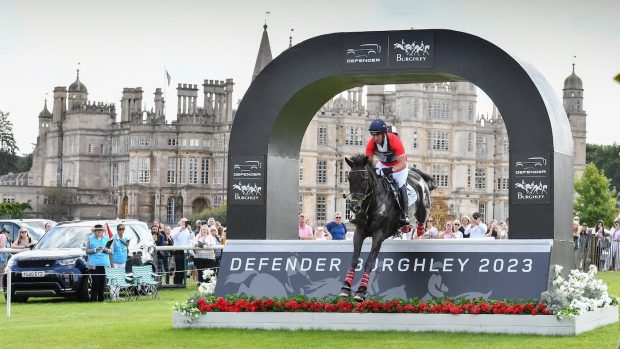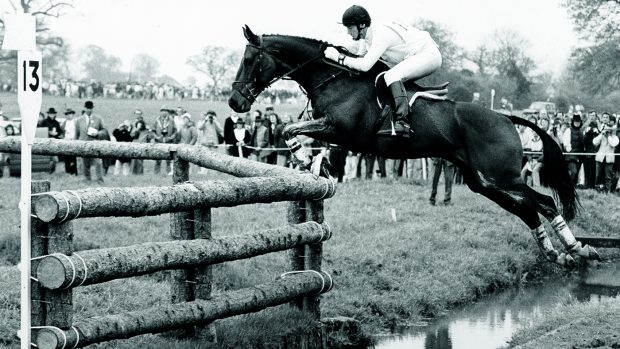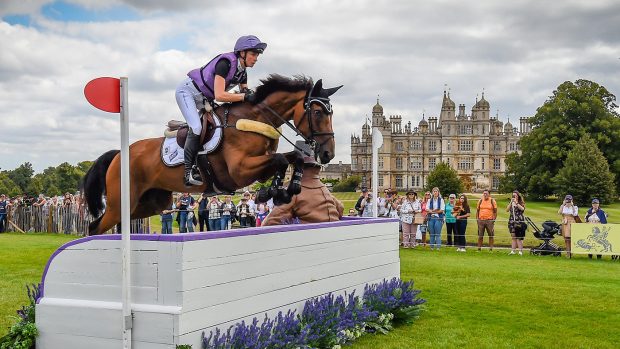Watch video of the six-time Burghley winner walking the most difficult fences on this year’s track
William Fox-Pitt, six-times winner of the Land Rover Burghley Horse Trials, has walked the whole course for this year’s competition for Horse & Hound. Here, he talks us through two of the most difficult fences.
Land Rover Dairy Farm (fence 14abc)
Competitors have been running straight without turning off their line since the water, and now they’ve got to get their horses balanced and engaged for this corner, which is approached on rising ground. It’s on an easier angle than it has been and they can come further to the left to get a good line. The sheep feeder second element is on a clear route from the corner on two strides. Then there’s a steep drop down the bank on a forward four strides — or maybe five on a wider line — to a second corner fence. It’s considerably bigger than the first corner and on a more acute angle.
The terrain encourages loss of balance and line; it’s a good question. The long route involves an upright gate, a different sheep feeder and a table, and is circuitous.
Land Rover Trout Hatchery (fences 20 & 21abcd)
This is interesting — there are a lot of options here. First, riders must choose one of two D-shaped brushes, and that decides the route through the rest of the complex.
Mark Phillips’ direct route is then to run through a water splash and turn sharp left on a cambered, sloping approach to a decent log drop into the water and four strides out to a brush corner. The “long” route is to stay on the left of the water splash, skim under some trees and jump a smaller log — last year’s fence — into the water, and then out up a step and left to a log.
I think you can take the smaller log and still turn to the brush corner; horses’ momentum will be slowed by landing in the water and I think it’s a very possible route. The corner is quite forgiving for Burghley and there is plenty of leeway on the approach, which will be a great relief to riders. The accuracy question after the water means it is really important to have short reins — there’s no point flapping and hoping for the best.
The final element is a skinny brush in the middle of the third pool of water. The distance to it from the corner is ambiguous and it is about line, balance, approach and not turning too soon to it.
It will be fascinating to see what riders do through here.
Read William’s thoughts on every fence and his overall impressions of the course in H&H magazine, out Thursday, 25 August.























